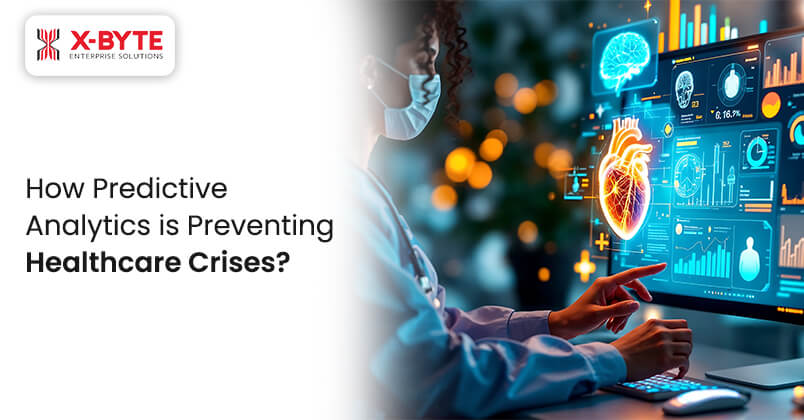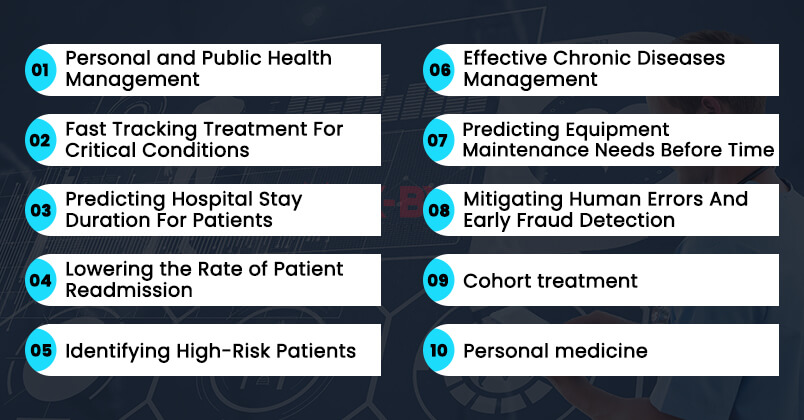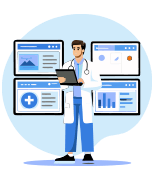-
solutinos
-
Hire
Frontend Developer
Backend Developer
-
NodeJS Developer
-
Java Developer
-
Django Developer
-
Spring Boot Developer
-
Python Developer
-
Golang Developer
-
Ruby on Rails Developer
-
Laravel Developer
-
.NET Developer
Technology
-
Flutter Developer
-
React Native Developer
-
Xamarin Developer
-
Kotlin Developer
-
Cross-Platform Developer
-
Swift Developer
-
MongoDB Developer
-
C Developer
-
Smart Contract Developers
Cloud
-
-
Services
Mobile Development
Web Development
- Work
-
Multi Services App
-
Food Delivery App
-
Grocery Delivery App
-
Taxi Cab Booking App
-
Multi Services App
-
OTT Platform APP
-
Social Media APP
-
Freelance Service App
-
Car Rental App
-
Medicine Delivery App
-
Liquor Delivery App
-
Sports Betting App
-
Online Coupon App
-
eLearning App
-
Logistics & Transportation App
-
Courier Delivery App
-
On-Demand Real Estate App
-
E-Wallet APP
-
Online Dating App
-
Handyman Services App
-
-
Process
-
Company

Quick Summary : By using AI ML and statistical models, predictive analytics in healthcare helps doctors make better diagnoses and create personalized treatment plans. However, the most crucial use case is the proactive intervention for the upcoming healthcare crisis. Yes, predictive analytics has the competencies to predict healthcare crises long before they take a monstrous appearance. This helps healthcare organizations deal with any healthcare crisis with complete preparedness.
No one knew an epidemic like COVID was going to change our world upside down. But tell you what, the pandemic season wasn't just chaos and confusion. We had our fair share of perks, too, from remote work becoming a norm to people increasingly becoming serious about personal health. One common thing linking all was data.
Fast forward to the present day. Data is all we've got, changing the very fabric of our existence. Take healthcare, for instance, where predictive analytics is harnessing the power of emerging technologies like AI, ML, and statistical models to predict rewarding outcomes.
The industry stats are downright impressive, with the global healthcare analytics market size expected to leap with a CAGR of 21% by 2030 (It was at USD 43.1 billion in 2023).
AI-powered healthcare solutions have tapped into new horizons of research and innovation with improved diagnostics, better chronic disease management, reduced human errors, lowered expenses, and high patient retention and engagement. Together, such dynamics contribute to a positive experience in patient care and well-being.
This blog elaborates on the idea of predictive analytics in healthcare, its uses and benefits, the best predictive analytics in healthcare use cases, and the way to build a functional, predictive analytics model as a healthcare brand. Read on!
What is Predictive Analytics in Healthcare?
Predictive analytics is an advanced approach to forecasting outcomes that takes historical data and statistical algorithms into account. Predictive modeling in healthcare is how modern healthcare professionals identify potential risks for a patient, make befitting clinical decisions, track the latest trends in treatment, and, above all, keep critical conditions from happening.
Data for predictive modeling in healthcare is generally extracted from health surveys, existing medical and admin records, prevailing medical conditions, patient registries, medical claims, and EHRs.
Understanding the Use of Predictive Analytics in Healthcare
We already know that healthcare, like any other industry, generates a truckload of data.
However, raw, unfiltered, and unstructured data is of no use. That's where healthcare firms need a data analytics consultant to draw vital insights. Some of the ways predictive analysis in healthcare is used include:
- Clinical research
- Advanced treatment
- New drug discovery
- Prediction and prevention of diseases
- Clinical decision support
- Faster and accurate diagnosis
- Enhancing the success rate of surgeries and critical medications
- Automation of hospital administrative processes
So, at a certain business level, predictive analytics in healthcare is the way forward to streamline existing operations, improve resource utilization, and foster efficiency and team coordination.
Top Benefits of Predictive Analytics in Healthcare

Healthcare businesses can't function as desired without embracing digitization. Whether running cost estimates for a critical treatment to reducing the chance of relapse, predictive analytics packs a punch for modern healthcare brands
Personal and Public Health Management
Conventional treatments have long relied on the "one-size-fits-all" method. In most cases, medications were prescribed exclusively based on limited statistics across patients. However, with predictive analytics, healthcare professionals can do a lot more. Thanks to increased accuracy and timely intervention based on a patient's unique condition.
Here's one potent case study for AI/ML solutions for healthcare where researchers developed a model tracking the spread of Ebola with big analytics. The data was sourced mainly from search engines and social media, where users potentially affected by Ebola could enter their symptoms using a mobile app. The app also tracked geo coordinates to ensure whether the contaminated person has been in touch with others in a close community.
Fast Tracking Treatment For Critical Conditions
Critical care has always been a challenge for doctors and medical professionals. But with modern health risk prediction tools, things ought to look better. Penn Medicine has already shown how to use AI-powered diagnostics via its collaborative data science platform helping hospitals deal with two major health issues, namely heart failure and sepsis.
The healthcare predictive modeling used by Penn Medicine had a commendable success rate, helping clinicians act fast and save valuable hospital resources.
Over 85% of cases were identified at least 30 hours earlier from developing sepsis (in comparison to 2-3 hours in traditional treatment)
Almost 30% of cases were recognized where initial heart failure symptoms in patients were poorly diagnosed with traditional methods
Such outcomes not only helped foster better care for critically ill patients but also dramatically reduced the costs. The AI/ML solutions for healthcare powering the predictive model prevented readmission, thereby saving hospitals from penalties and added operational costs. This was made possible by tapping into EHRs and flagging patients who were more likely to miss doctor appointments and follow-up checkups.
Embrace Predictive Analytics for Better Outcomes and preparedness for healthcare crisis!
Connect with X-Byte for predictive analytics solutions for healthcare.
Predicting Hospital Stay Duration For Patients
It's always tricky for hospitals to plan resources when a patient's stay is prolonged, either due to disease progression or treatment complications. However, predictive analytics in healthcare now offers a window for hospitals to estimate the length of stay for a patient.
Reportedly, a large hospital group used Intel-powered Xeon processor clusters for smart ingesting of “structured, unstructured, and unrelated” patient data. This allowed them to plan and coordinate their staff more efficiently, and they ended up saving up to USD 200 million annually. The hospital utilization facility also went up by 5% to serve an additional 10,000 patients.
Lowering the Rate of Patient Readmission
There will always be patients who run the risk of readmission. However, failing to identify such cases during initial diagnosis can lead to serious consequences. That's where a data analytics consultant facilitating AI/ML Solutions for healthcare comes into the picture.
By tapping into EHRs and other socio-economic data, predictive analytics models help hospitals quickly identify patients running the risk of readmission. That way, hospitals can plan additional care and design improvement plans for the patient before it gets worse.
In one such case, AI-powered diagnostics helped a leading hospital group to lower a total of 6000 readmissions. This helped save over USD 4 million in Medicare penalties and another USD 72 million for annual, all-around medical expenses.
Identifying High-Risk Patients
One of the most significant benefits of predictive analytics in healthcare is perhaps the identification of high-risk patients, especially the ones who've stopped responding to treatments.
In one such example, Sharp Healthcare deployed a smart predictive analytics model using AI and ML to collect data from EHRs.
The model reportedly predicted patient decline events for a 1-hour window with 80% accuracy. This helped Sharp assign rapid response teams for proactive intervention, thus improving patient care and lowering expenses.
Effective Chronic Diseases Management
Chronic diseases are the number one reason for deaths across the world. In the US, they are also the reason for lifetime disability and a major driver of the country's annual health costs, amounting to no less than $3.5 trillion!
The global healthcare industry identifies five critical medical conditions as critical, including diabetes, obesity, cancer, kidney problems, and cardiovascular diseases. And while most diseases can be multifaceted with no respite, it boils down to symptomatic treatment to keep them from turning worse. With multiple real-time health analysis tools, predictive analytics in healthcare can drive fact-based medical decisions for better treatment at low cost.
Here, the North American market makes an excellent case in point for predictive analytics adoption. According to 2023 industry data, North America reported a revenue share of 48.6% for embracing healthcare analytics solutions. Thanks to the region's state-of-the-art healthcare solutions, which in turn is driven by the rising number of chronic ailments in the geriatric population.
Predicting Equipment Maintenance Needs Before Time
Industries like telecommunication and manufacturing have long benefited from using predictive analytics tools, chiefly for predicting equipment maintenance needs before time.
Predictive analytics in healthcare can help hospitals and clinics reap similar benefits.For instance, it can assess sensor data coming from an MRI machine and forecast a period during which it might need repair or maintenance. Having such information in hand will help hospitals plan their equipment budget right, have replacement equipment on standby, and minimize workflow disruption for patient care teams.
Mitigating Human Errors And Early Fraud Detection
To err is human. But not at the cost of losing a life, right? Yet, 1 in 10 patients globally are harmed during medical treatment. From diagnostics to surgery, human errors are a hard-boiled truth that contributes to patient harm to the extent of fatal outcomes in some cases.
Research suggests that over 50% of such mishaps can be avoided. Predictive modeling in healthcare has a way out with near-accurate, real-time insights that help clinicians with better prognosis. It can also flag potential human errors, thereby lowering the chance of fatality, especially in critical cases.
The other area of concern in healthcare is the rising number of frauds. Every other day, newspapers flash stories of patient families tricked into paying for fully-covered prescription medicines. In most cases, these medicines are either not required in the first place or black-marketed at exorbitant prices.
Other common fraudulent activities include illegal modification of patient records, willful misdiagnosis, and incorrect reporting. With predictive modeling systems and AI-powered diagnostics, one can flag abnormalities within a system and keep such unwanted incidents at bay.

Enhance diagnosis, treatment, and patient outcomes. AI-driven healthcare innovation awaits your healthcare organization!
Partner with X-Byte for cutting-edge AI/ML healthcare solutions!
Connect Now! Connect Now!Cohort treatment
Digital health records provide valuable community health insights, though privacy regulations control data access. Population-level analytics helps identify health patterns and guide interventions like anti-smoking campaigns. It enables early disease prediction and proactive healthcare management. Pharmaceutical data, as quoted by Deloitte, reveals disease clusters, while epidemiological studies benefit from rapid risk assessments, helping identify at-risk populations.
Personal medicine
In personal medicine, predictive analytics uses individual-level data and prognostic tools to help doctors identify treatments for rare conditions and model mortality rates more accurately. Research indicates treatment effectiveness varies across patient groups due to genomic differences.
Predictive analytics processes complex genetic data to reveal patterns that inform personalized treatment decisions. It helps assess surgical risks and identify high-risk patients requiring intervention. For instance, the University of Pennsylvania predicts septic shock 12 hours in advance, while insurers use these models for risk assessment.
A Rewarding Future Of Predictive Analytics In Healthcare Awaits You
The singular goal of predictive modeling is to help one answer one potent question: "What is likely to happen in the coming years based on past known behavior?" And that includes endless algorithms with specific data in hand. Undeniably, it's a super iterative process with relentless training of AI and ML models until the business goals are fulfilled.
So, where does that leave you as a healthcare brand? How do you make the most out of predictive analytics solutions? Fret not! Partnering with a reliable data analytics consultant will help you find answers to the most pressing questions. From data gathering and cleaning to building a perfect predictive analytics model for unique requirements, a data analytics company ticks all the boxes.
At X-Byte, we are your go-to data analytics solutions partner promising the best leverage with cutting-edge tools and emerging technologies. Our extensive expertise working with leading healthcare brands around the globe puts us a step ahead in modernizing internal operations and driving data-backed decisions for efficiency and profit.
If you're looking to design a functional predictive analytics model as a healthcare brand, we would be more than happy to breathe life into your vision. Click the link below to schedule your free, no-obligation consultation call now.
